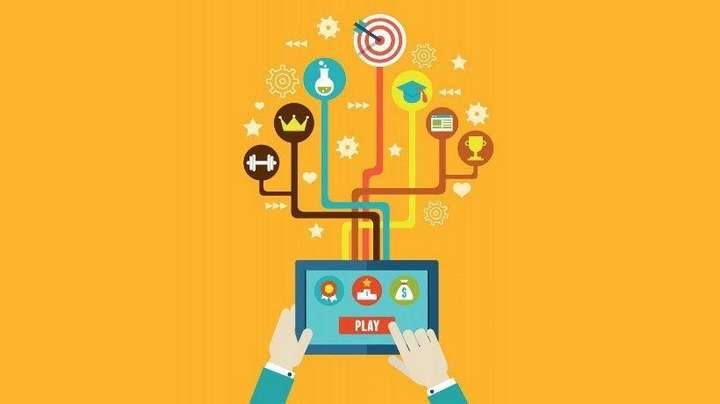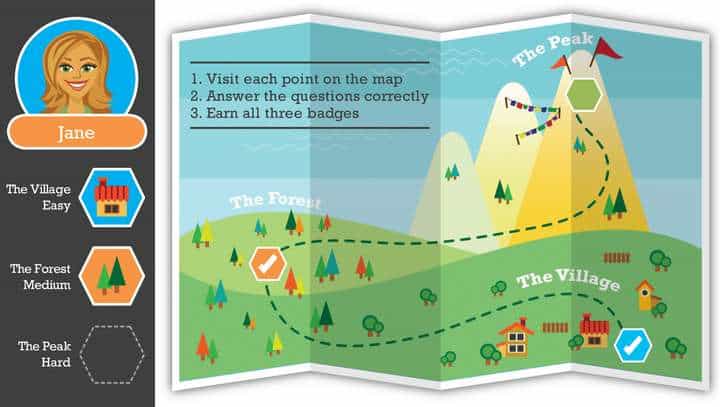Gamification is an effective strategy used for education purposes, and the best about it is that it boosts engagement in eLearning. Technological advancements have made gamified eLearning possible through impressive innovations. So, today, there are many ways of learning and retaining information. Students, employees, clients, and even SaaS web design companies have access to eLearning gamification.

Gamification means using many exciting game designs and elements. Such an approach enhances learning, boosts concentration, engagement, and productivity. You can also enjoy unique user interface elements in video games. For instance, levels, progressive bars, virtual coins, and rewards are all part of this idea.
Moreover, such games usually follow mobile learning principles, and you can access content regardless of time and location. But are the virtual games effective, as experts say? Is gamification the best approach in enhancing e-Learning?

Read on and gain more insight into the most successful gamification examples.
Lifesaver – First-aid Principles
Lifesaver is a gamified eLearning portal. It uses interactive films to help learners understand simple first-aid principles. The application is quite engaging, and it features a series of films with timed actions and separate stories. Users find the game exciting as they can earn scores with each play. Thus, it’s an engaging way to learn different CPR skills.
Duolingo – Language Learning
Duolingo is a popular app that helps users learn over 30+ different languages. The platform has taken eLearning to the next level, and it uses gamification to capture the interest of most users.
Mastering a new language is not easy and takes determination, time, and effort. But Duolingo has simplified the entire learning process, and it has challenges, levels, progressive bars, winning streaks, money rewards, and achievement boards. Thus, language learning is now more appealing with this user-friendly gaming app.
McDonald’s – Till Training
Another interesting gamification example in eLearning is the McDonald’s training app. Kineo is the app developer. It offers employees an interactive space for learning how to become competent cashiers. The McDonald’s game is a modern application delivering technological innovations in learning through a focused and fun approach. Employees engage in challenging game levels to understand the pressure of a till operator. Besides, the game has different lifelines, timers, and hefty bonuses for successful players.
Domino’s Pizza Hero – Employee Training
Domino’s Pizza Hero is a thrilling game that allows interested users to make virtual pizzas. The game’s primary purpose was to recruit the best players into the company as chefs. The company also used the game as an employee training app for skill improvement. Still, these applications are not all that an app can do. Its fans can also play the game for entertainment purposes. You can enjoy interactive sessions, pizza-making challenges, and attractive rewards.

Medieval Swansea – Investigation
Medieval Swansea is an interactive application that focuses on detective skill development. It allows users to solve historical mysteries through several captivating scenes. The game has responsive gaming features. Besides, players can access it using different devices.
The investigative app is narrative-based, complete with characters and plot setting. Players get familiar with characters at different stages, scoring points that take them to the next level. Moreover, the game offers conclusive feedback on how the player progress in each step. Thus, the users have a clear idea of their investigative skill development.
Virtual Reality House – Skills Training
Virtual Reality House is an engaging application. It allows trainees with specific skills to improve their trades. Electricians, plumbers, or gas engineers can use this game to enhance their expertise in VR settings. A virtual house in this immersive app teaches the trainees through interactive sessions. The VR setting is risk-free, so users aren’t afraid to make errors during training. Thus, they learn without fear of losing the game. VR House helps in confidence-building and improving competency levels, with learned skilled applied in the workplace.
This gamified eLearning app uses a 3D virtual reality platform for solving specific challenges. It makes the sessions realistic and offers flexibility for gamers of varying skills. You can play depending on your knowledge in each domain.
Heineken Capability Academy – Game Learning
Heineken combines the gaming platform with learning through an interactive board game. The game has a map that keeps the players updated on their progress and going. You must answer tricky questions and cover the challenges to earn points and climb the leaderboard. Top scorers in the game get impressive rewards. Besides, you can get detailed feedback about our competency levels.
Elucidat Quizzes – Virtual Tests
Elucidat quizzes are virtual tests designed with a Christmas theme. The app uses an exciting format with interactive features. Gamified learning is diverse, coming in different formats like timers, audio queues, and drag-and-drop elements. One exciting aspect is that learners enjoy the sessions because of exciting rewards. Also, the game has an appealing user interface, resulting in an engaging learning experience.

Gamification and eLearning Go Hand in Hand
Technology plays a vital role in enhancing gamification in eLearning. It has transformed the education sector, and many people enjoy intelligent, appealing, and attention-grabbing products. Thus, traditional learning is no longer an issue. Everyone can download interactive apps on their phones.
Besides, the use of gamification proves that learning is evolving. It is now possible through innovative games that simulate real-life situations. The new gamified approach helps to engage learners as people love games and boosts their concentration levels. Thus, you don’t have to attend a physical class to learn new skills; you can play a game and enhance your skills.
Most organizations and large businesses also realize the significance of gamified training sessions. Business owners use games as a recruitment or training tool, which helps achieve business goals and advance together with technology. With the gamified learning examples we’ve just discussed, you can see how easy it is to make the learning process easy and hassle-free. Thus, all forward-looking businesses must take gamification seriously, including its elements in their software products to attract and keep users.





